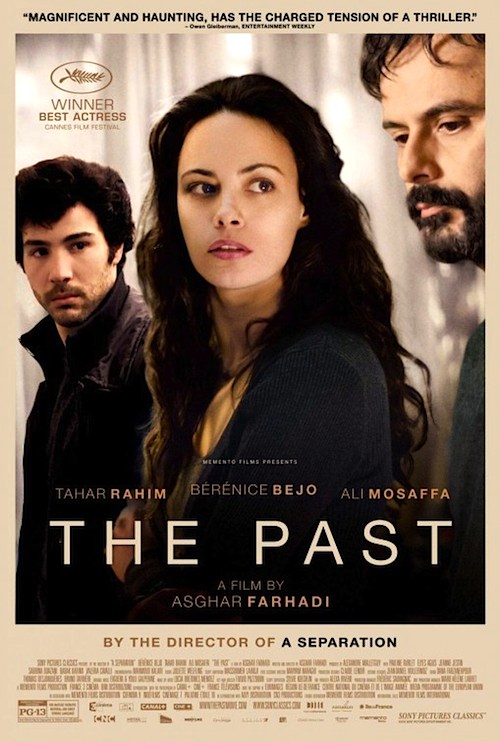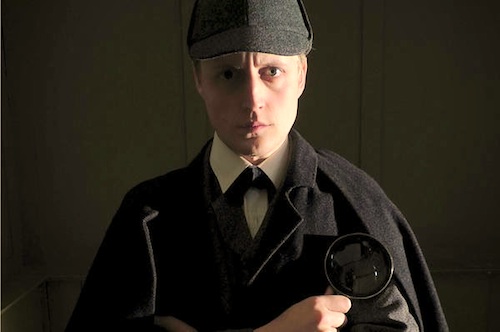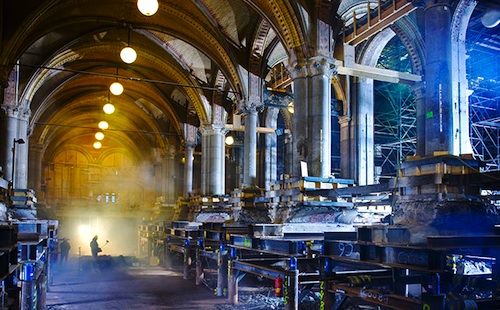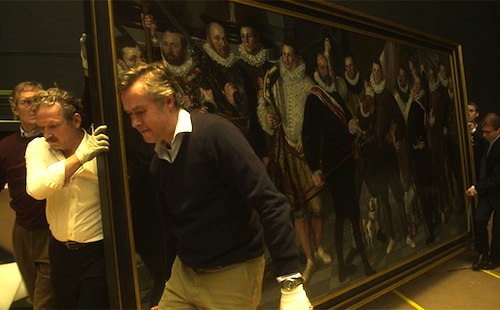By Joe Bendel. It is hard to define Ahmad’s role in the family drama he re-submerges himself in. As Marie’s soon to be ex-husband, he is intimately familiar with her and her two daughters from a previous relationship. Of course, he is a complete stranger to Samir, her next intended husband, and his young son. That ambiguity provides rich fodder for Asghar Farhadi’s French language, Iranian Oscar submission, The Past, which opens this Friday at Film Forum.
Ahmad, the former Iranian expat, has returned to Paris to finalize his divorce with his French wife, Marie. One might wonder why he should travel such a long way for a bit of paperwork. Frankly, the same question crosses Ahmad’s mind as well. Regardless, here he is. Much to his surprise, he learns he will be staying with Marie and Samir in their distinctly unfashionable suburban Paris home.
 Viewers quickly deduce Ahmad has a history of mental instability, whereas Marie is a bit of game-player. The now stoic Ahmad tries to take the high road, but he is soon drawn into his eldest former step-daughter’s cold war with Marie. Lucie is dead set against her mother’s engagement to Samir, because she believes their love affair drove his comatose wife to her suicide attempt. As Ahmad tries to counsel Lucie, he discovers the truth is considerably more complicated than anyone suspected.
Viewers quickly deduce Ahmad has a history of mental instability, whereas Marie is a bit of game-player. The now stoic Ahmad tries to take the high road, but he is soon drawn into his eldest former step-daughter’s cold war with Marie. Lucie is dead set against her mother’s engagement to Samir, because she believes their love affair drove his comatose wife to her suicide attempt. As Ahmad tries to counsel Lucie, he discovers the truth is considerably more complicated than anyone suspected.
Despite having no formal position in the family, Ahmad becomes the closest thing to a referee they have. Yet, it is clear the feelings he and Marie once had for each other remain unresolved. It is fascinating to watch him navigate this tortuous emotional terrain, acting as an honest broker and peace-maker, while keenly aware of his own destabilizing influence. Ahmad is a tricky role to pull off, considering he often serves as an audience proxy as well as an independent actor in his own right, but Ali Mosaffa pulls it off masterfully. It is an exquisitely humane turn that darkly suggests volumes of unspoken back-story.
Although Ahmad is central to the narrative, he is still a supporting player in the overall scheme of things. This is Marie’s story, driven by her problematic relationships with Samir and Lucie. The thoroughly de-glamorized Bérénice Bejo’s lead performance is earthy and passionate, constantly approaching the overwrought, put always pulling back just in time (because the working class cannot afford such indulgences). Pauline Burlet is also quite remarkable, making Lucie’s inner turmoil vivid and believable in an angsty teen-aged sort of way. She could be this year’s equivalent of Shailene Woodley in The Descendants.
The opening of The Past essentially closes the year in film. Granted, there are some presumptive Oscar candidates slated to open Christmas week, but they do not deserve their buzz. In contrast, The Past should be a contender in multiple categories. It might not have quite the same visceral intensity of Farhadi’s A Separation and About Elly, but those films set the bar awfully high, making comparisons decidedly unfair. The Past is a gripping film that embraces the messy humanity of its characters. It is a bracing yet forgiving film, much in keeping with the rest of Farhadi’s filmography. Highly recommended, The Past opens this Friday (12/20) at New York’s Film Forum.
LFM GRADE: A-
Posted on December 16th, 2013 at 10:02pm.


